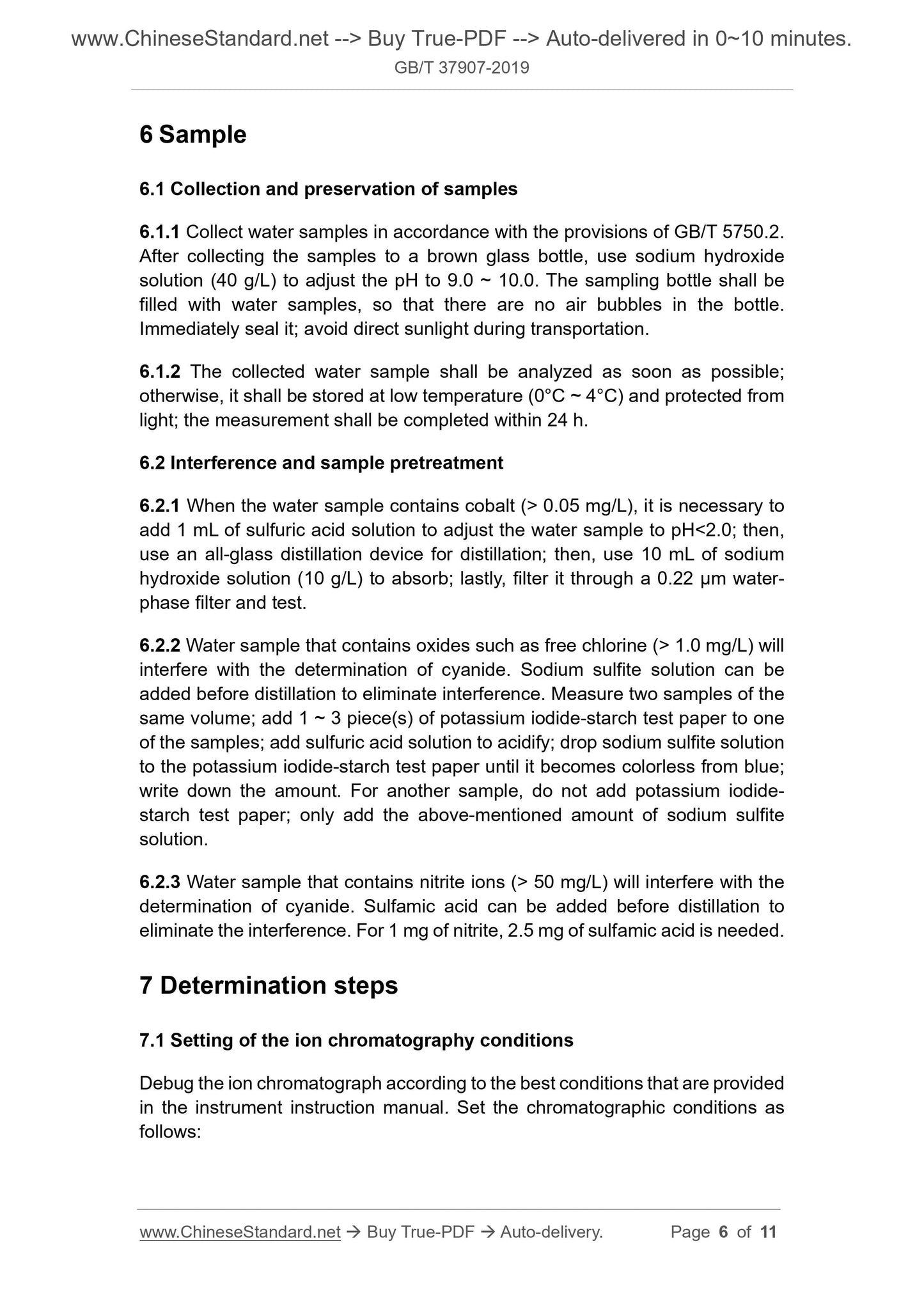1
/
of
4
www.ChineseStandard.us -- Field Test Asia Pte. Ltd.
GB/T 37907-2019 English PDF (GB/T37907-2019)
GB/T 37907-2019 English PDF (GB/T37907-2019)
Regular price
$150.00
Regular price
Sale price
$150.00
Unit price
/
per
Shipping calculated at checkout.
Couldn't load pickup availability
GB/T 37907-2019: Reclaimed water quality - Determination of sulfide and cyanide - Ion chromatography
Delivery: 9 seconds. Download (and Email) true-PDF + Invoice.Get Quotation: Click GB/T 37907-2019 (Self-service in 1-minute)
Newer / historical versions: GB/T 37907-2019
Preview True-PDF
Scope
This Standard specifies the determination method of sulfide and cyanidecontents in reclaimed water -- ion chromatography.
This Standard is applicable to the determination of sulfide and cyanide contents
in reclaimed water. The measurement range is 0.5 μg/L ~ 100 μg/L. When the
mass concentration exceeds 100 μg/L, it needs to be measured after dilution.
This Standard is also applicable to the determination of sulfide and cyanide
contents in surface water and drinking water.
Basic Data
| Standard ID | GB/T 37907-2019 (GB/T37907-2019) |
| Description (Translated English) | Reclaimed water quality - Determination of sulfide and cyanide - Ion chromatography |
| Sector / Industry | National Standard (Recommended) |
| Classification of Chinese Standard | G76 |
| Classification of International Standard | 13.060.50; 71.040.40 |
| Word Count Estimation | 10,175 |
| Date of Issue | 2019-08-30 |
| Date of Implementation | 2020-07-01 |
| Issuing agency(ies) | State Administration for Market Regulation, China National Standardization Administration |
Share







